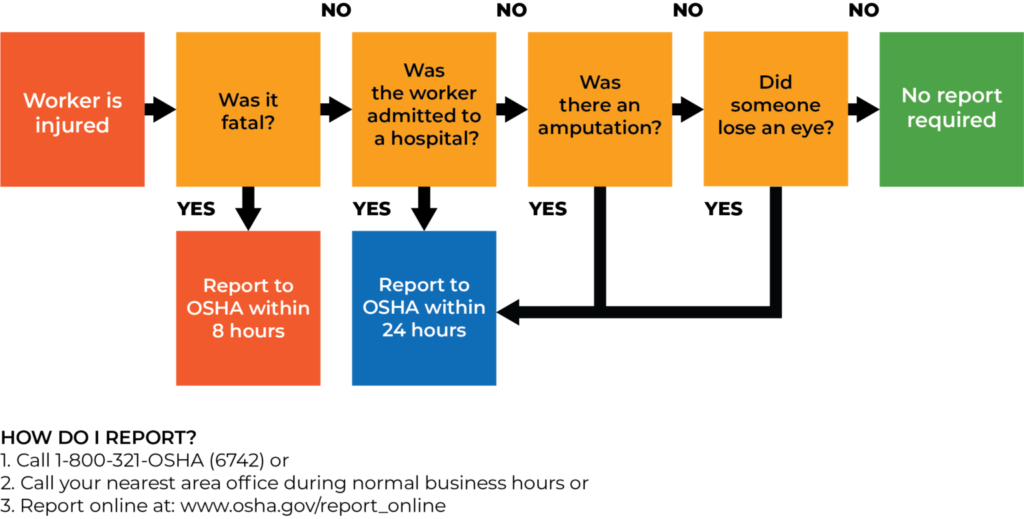The Occupational Safety and Health Administration (OSHA) requires organizations to maintain OSHA recordkeeping in order to be compliant with certain safety standards. These elements are set to help safety professionals ensure they are protecting workers from any potential risk on-site.
OSHA Form 300 is one of these requirements organizations with 10+ employees in high-risk industries need to regularly update, record, and post. What exactly is this form? OSHA Form 300 helps you log all injuries and illnesses at your organization. Failure to maintain your OSHA 300 Log can result in hefty fines, hurting your bottom line.
Our team at Alcumus wants to ensure you have all the information needed to maintain your OSHA reporting requirements in reference to the OSHA 300 Log, so sit back as we take you through:
The Different OSHA Injury and Illness 300 Forms.
Changes in OSHA Reporting Requirements.
COVID-19 OSHA Injury and Illness Reporting Requirements.
How and Where to Submit the OSHA 300 Log.
What are the OSHA Injury and Illness 300 Forms?
First, let’s begin by diving into the 3 different types of forms which make up OSHA 300 Reporting. Each is essential to remain compliant with OSHA injury reporting, so ensure they are always completed and updated as necessary especially if and when OSHA presents themselves at your work site for an inspection.
Let’s break them down:
1. OSHA Form 300
As stated earlier, think of OSHA Form 300 as the document where you write down the different injuries and illnesses that have occurred on-site. Though it’s important to have a record of all injuries and illnesses on-site, not every injury or illness needs to be included. Allow us to explain:
OSHA states that injuries and illnesses only need to be logged if they have resulted in a fatality, medical treatment beyond first aid, days off work, loss of consciousness, and a few other elements.
If any of these have occurred, you must fill out the OSHA Form 300 detailing the person who was injured, permanent or temporary, the details of the injury or illness itself, including the date and where it occurred, as well as the result, such as hospitalization or days away from work.
2. OSHA Form 300A
OSHA Form 300A is the total summary of all work-related injuries that have occurred on-site during the year. This includes the total number of injuries, illnesses, deaths, days away from work, recordable cases, etc., without identifying the personal details of involved workers.
3. OSHA Form 301
Lastly, is the OSHA Form 301. This form is a compliment to the OSHA Form 300, as it allows you to go into more detail about the injury or illness mentioned. Here you can paint the picture of exactly what happened and what the outcomes were.
Changes to OSHA Reporting Requirements
In a fast-paced environment, OSHA’s injury and illness incident reporting has changed requirements over the years. In 2002, for example, the 300, 300A, and 301 Forms were introduced, and in 2015 fatalities, hospitalizations, and the loss of an eye had to be reported within a certain time frame. This is reflected in the below figure, included in Graigner Know How’s article OSHA Recordkeeping & Reporting Requirements.

Source: Graigner Know How, OSHA Recordkeeping & Reporting Requirements, Mar. 2020
In 2016, OSHA updated requirements again to state you only have to submit OSHA Form 300, 300A, and 301 every year if you have over 250 employees in a high-risk industry. Those who have anywhere between 20 and 240 employees only need to submit OSHA Form 300A by March 2nd, annually.
COVID-19 OSHA Injury and Illness Reporting Requirements
With the current pandemic, OSHA has updated its requirements once again to include COVID-19 related information. In November 2020, they stated all COVID-19 cases must be recorded if work-related and if it resulted in effects outlined in standard 29 CFR 1904.7, which include death, days away from work, loss of consciousness, etc.
Though not every case must be recorded, each needs to be investigated to decide whether it has been caused by elements on the worksite. If this is the case, the OSHA 300 log forms must be completed.
New guidance was also recently released in January 2021. Click here, to learn more.
How and Where to Submit the OSHA 300 Log
Now that you know the information that needs to be recorded, let’s discuss how and where to submit the OSHA 300 log. Your OSHA 300 log must be posted between the months of February and April, for the previous year; however, all three OSHA forms must be regularly updated, and not just during this time period. As outlined by OSHA, all records must also be maintained for at least five years.
Though OSHA has stated that forms 300 and 301 no longer need to be submitted electronically to protect the privacy of workers involved, Form 300A needs to be submitted by March 2nd for the previous calendar year. This can be done electronically through OSHA’s Injury Tracking Application Login.
OSHA recordkeeping and reporting is vital to not only keep your organization away from citations but to ensure all workers are protected every day. Once injuries and illnesses are logged and recorded, you can start to investigate what led to them and if there are any patterns or trends that appear to help you mitigate these risks in the future.
Alcumus allows you to remain compliant and create a safer work environment with our full-business safety solution. From our robust compliance elements to our powerful reporting capabilities, Alcumus will help keep you and your team safe. Get started by speaking to one of our safety experts today.






